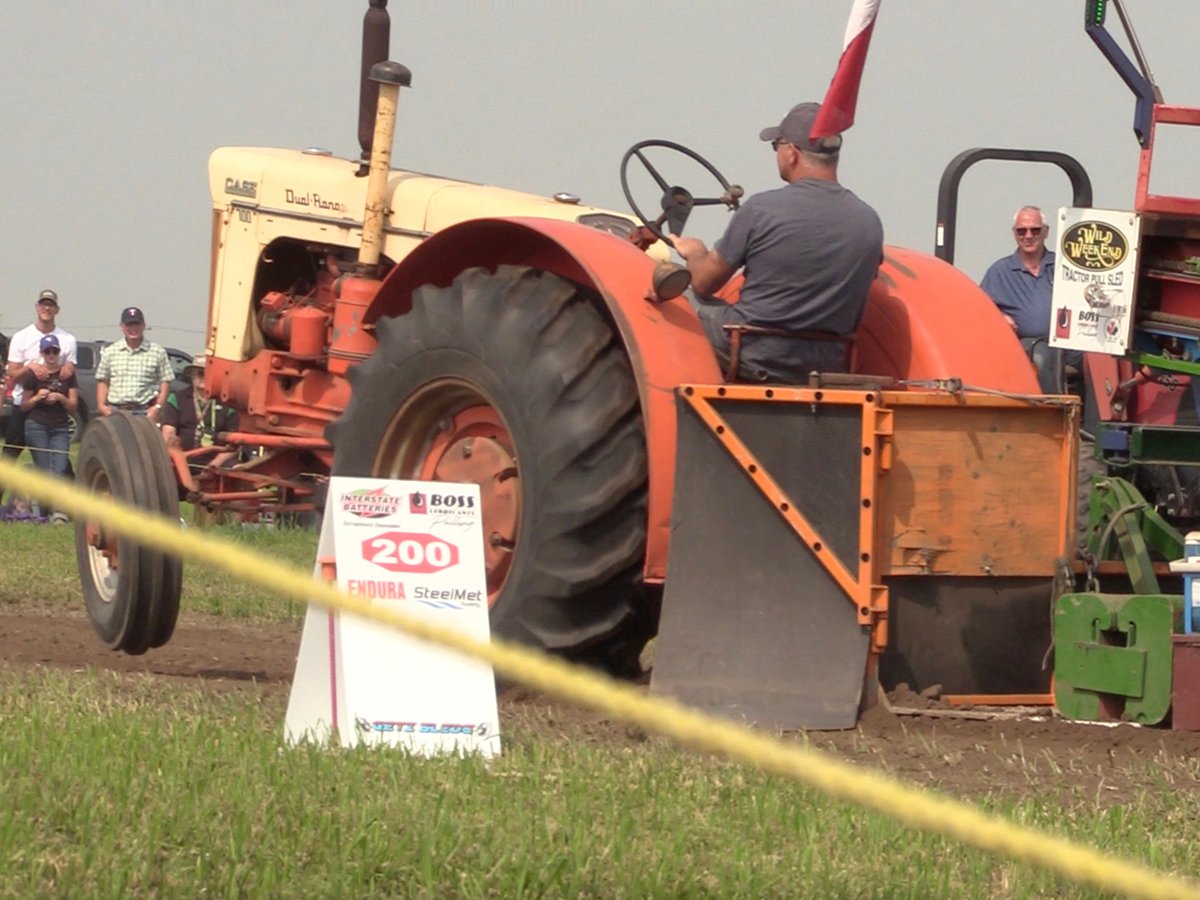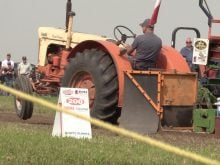HOLDFAST, Sask. – You might have seen some of Kelly Thorson’s work and didn’t know it.
In the 15 years she has been in business, she has made dozens of signs for retail co-op stores in Alberta, British Columbia and Saskatchewan. In fact, the Federated Co-op system is one of her oldest and best customers.
Thorson never planned to be a sign maker. When the television broke on her family’s grain farm in central Saskatchewan 25 years ago, they didn’t replace it. Her husband took up guitar and computers while she started painting. People who knew she could paint began approaching her about signs.
Read Also

Vintage power on display at Saskatchewan tractor pull
At the Ag in Motion farm show held earlier this year near Langham, Sask., a vintage tractor pull event drew pretty significant crowds of show goers, who were mostly farmers.
She eventually decided she should get more serious about her hobby so she trained for two weeks with Cardinal Signs in Brandon, read many trade magazines and plunged into business by buying equipment to put into an old garage on Holdfast’s main street.
Today she is in the same location, but said she has learned a lot about running a sign shop, especially as a one woman show.
Thorson said she made the switch from interesting hobby to profitable business once her three children were out of school.
She said signs are challenging because new materials, designs and styles continue coming into fashion. Researching and finding suppliers of quality materials and bringing them cheaply to her rural business can be difficult.
“You’ve got to be really flexible to be in business in small town Saskatchewan,” Thorson said. “I try to be everything for everybody. I love learning and experimenting.”
From painting wooden highway billboards, Thorson moved on to experiment with sand blasting wood to create three-dimensional images. Her latest explorations involve etched and reverse glass signs.
“Pricing was extremely confusing and I consistently underpriced everything,” she said. “I guess that is one way to build a client base – do everything cheap.”
Thorson’s business, Kel-T-Grafix, made a big leap five years ago when she discovered the website Letterheads. It is run by an Ontario couple and offers a networking service for sign painters from around the world. Thorson has become one of the site’s 2,000 fee-paying members who can post problems and ask for help or display their work.
The website also holds workshops and Thorson is helping organize one in Moose Jaw, Sask., next year. She expects it will draw at least 100 sign artists, including some from the United States and Australia.
“It’s been an incredible source of information for me. It’s a community as well,” Thorson said about the website. “I’ve made some very good friends out of it.”
She said her husband teases her about having internet chat friends, but members have raised funds on the site for colleagues with medical problems and those hurt by Hurricane Katrina.
Letterheads not only taught Thorson about the importance of readability in signs but also new techniques such as reverse glass art. It is an old technique from the 1800s that involves painting, using gold and creating textures with animal hide glue.
She is hoping she can sell the results to restaurants and hotels that can afford them. Part of the cost is because of the materials, but also it is a time consuming and failure-prone art that often means trying a design two or three times before it comes out right.
This has led her to create a second business called Lost Mountain Glass Works. She plans to run both businesses out of the same shop because “they complement each other nicely, but it will hopefully afford me the opportunity to promote and do more of the high end glass work.”
Thorson has a Saskatchewan centennial glass sign that she hopes government and educational institutions will buy. She also hopes century farms will want custom glass pieces to note their accomplishments.
“I felt that the 100 year mark of our province deserved a dignified and appropriate commemorative piece and that a piece made from a craft that was a century old was fitting.”
She has also designed and sold 1,000 centennial plasticized licence plates, which was done with the help of two local women.
Thorson keeps close to her customers and wants to know if paint peels or the sign fails in any way so she can fix it for them. She said her best advertising is word of mouth.
“I feel driven to do the best. I don’t want them cutting me any slack because I’m a woman. I want them to respect me for being a sign maker.”
















